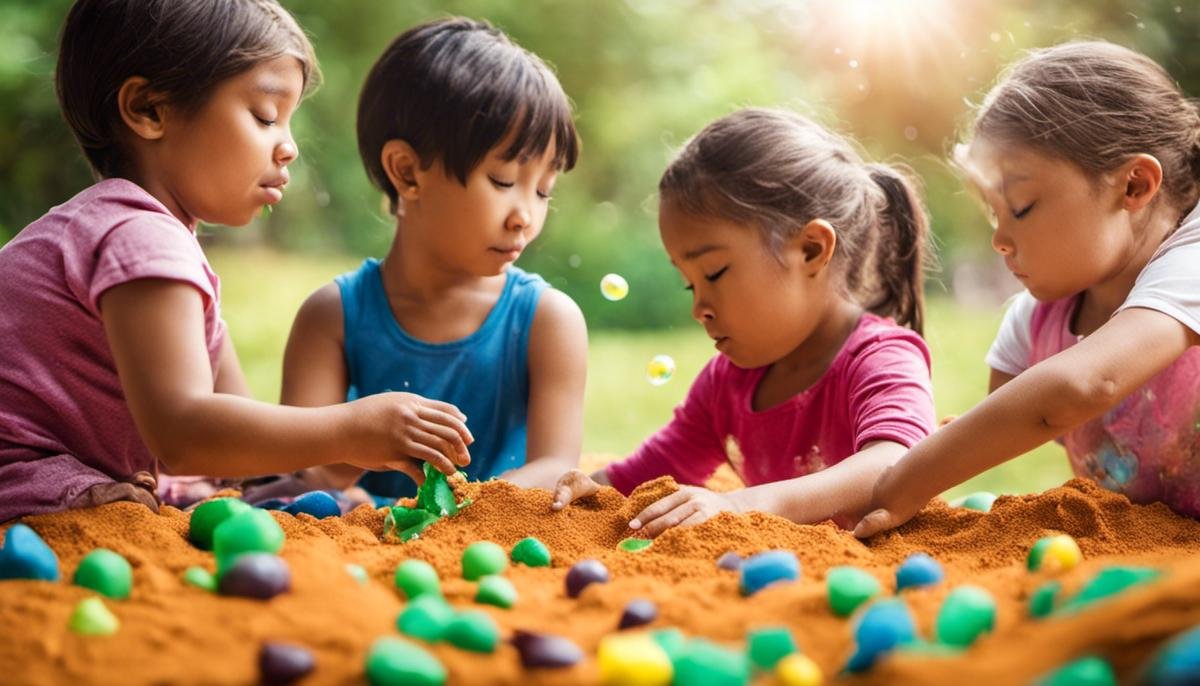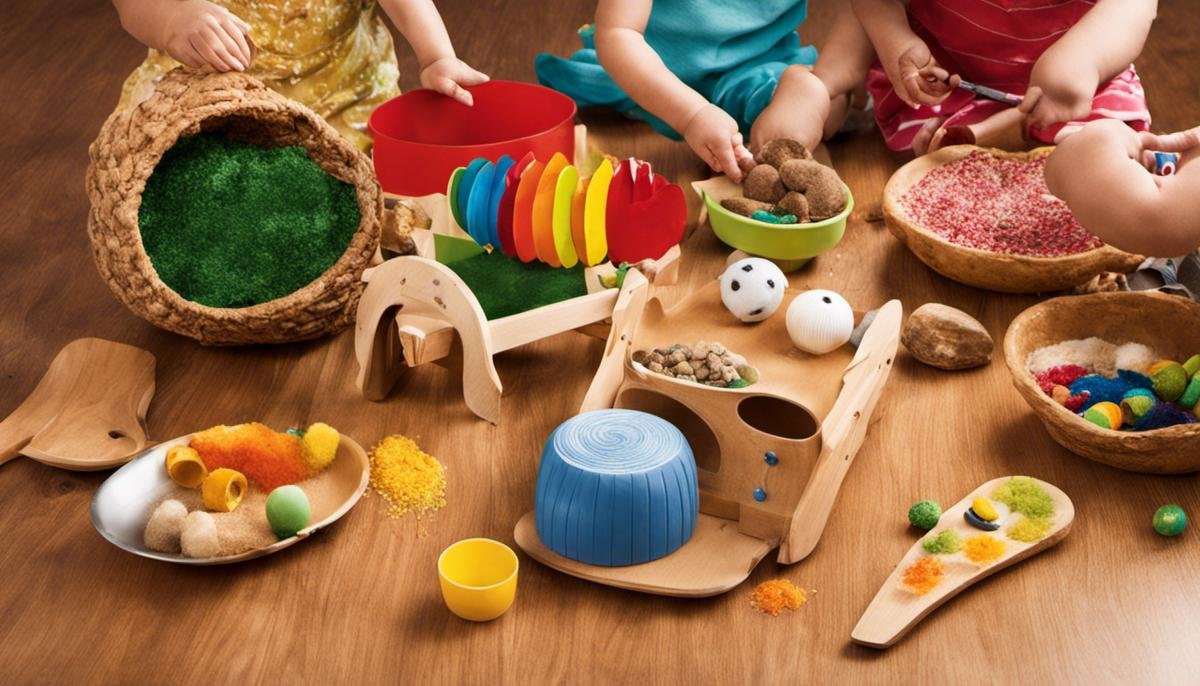
Navigating the complexities of autism often requires a blend of understanding the condition and tailoring activities to meet the special needs of autistic children. Defined by variations and unique experiences, autism affects sensory processing, leading to effects of over-stimulation. This presents significant challenges that children with autism encounter on a daily basis. Calming activities play an instrumental role in mitigating these, improving their sensory experiences, and advancing their developmental progress. From sensory play activities that foster motor skills and curiosity, to relaxation techniques that instill tranquility and alleviate stress, there exists a broad spectrum of strategies for soothing autistic kids.
Understanding Autism
Creating Calming Activities for Autism: Understanding The Essential Aspects
In the bustling world of parenting, one key element that often paves the way to success is understanding. In particular, understanding the unique needs of kiddos on the autism spectrum is paramount. This understanding helps in tailoring and implementing calming activities, which play a crucial role in balancing sensory issues and promoting their wellbeing. So, let’s delve into the depths together, and consider some critical aspects of autism that can help plan successful calming activities.
Firstly, individual sensitivity varies greatly in children with autism. This could range anywhere from hypersensitivity (over-responsiveness) to hyposensitivity (under-responsiveness). Children who are hypersensitive could find everyday noise, touch or light overwhelming. On the other hand, hyposensitive children might not feel pain or extreme temperatures and might even crave sensory experience. Hence, it’s beneficial to consider the unique sensitivities of each child when planning calming activities.
Next, understand the stimming behavior. Stimming, or self-stimulatory behavior, is repetitive or unusual body movement or noises. These behaviors, often seen in children with autism, might include hand flapping, rocking back and forth, or echolalia (repeating sounds or phrases). While it might be tempting to stop such actions, remember that this is their way of coping with overwhelming situations or expressing feelings of happiness. So, rather than suppressing stimming, one can redirect it to safer and more socially acceptable forms, such as squeezing a stress ball or using fidget toys.
Precision is another crucial aspect. It is essential to keep instructions clear and precise for children with autism, avoiding ambiguities that might create confusion. Using visual aids, such as charts, pictures, or even videos, can be remarkably helpful in demonstrating the activity and making the participation more comfortable.
Lastly, remember that predictability is calming. Often, children with autism thrive on routines and predictability. Any sudden change might trigger resistance or anxiety. Therefore, when introducing a new calming activity, ensure that it’s rolled out gradually and incorporated into the child’s routine in a predictable way.
Creating calming activities for children with autism doesn’t have to be an insurmountable task. With a keen sense of observation, patience, and understanding— and a genuine love in our hearts, it’s more than possible to create a world that’s just right for our little ones. As we learn more about the wonderful world of autistic children, let’s remember to welcome and embrace their unique spectrum of experiences as a part of our enriching journey in parenthood and homemaking.

Sensory Play Activities
Sensory Play: A Therapeutic Avenue for Kids with Autism
Children diagnosed with autism often experience overwhelming sensory distractions. Sensory play, a therapeutic method that engages all five senses, provides an excellent avenue for introducing calming activities to these children. This approach goes a long way in helping them develop essential life skills while creating an amicable environment where they feel comfortable, calm, and loved.
One of the most effective calming activities for kids with autism is sensory bins. These are containers filled with items that stimulate the senses—like rice, jingle bells, or even colorful pasta. This form of sensory play encourages children to explore different textures, shapes, and sounds at their own pace. It also provides a comforting, repetitive motion that aids in calming their senses.
Another way to integrate sensory play as a calming activity is through water play. Kids adore water and its many facets—whether it’s the sound of waves, the texture of slime, or the sight of bubbles popping. Water stations with various toys like rubber ducks, squishy balls, and pour cups can promote a sense of calm and keep them engaged. Remember to monitor kids during water play for safety.
Crafts and art projects are also fabulous ways to induce a calming effect. These activities not only promote creativity but also cater to kids’ tactile senses. Clay modeling, finger painting, or collaging with different materials can be particularly soothing. These activities also offer an opportunity for you to chat with your child, offering words of encouragement, which can have a considerable calming effect on them.
Creating a sensory-safe room is also ideal for calming children with autism. Fill the room with calming sensory aids like a lava lamp, a weighted blanket, or a rocking chair. Use soft, cool colors for the furnishings and walls, and ensure the room is well-ventilated and naturally lit. This will create a conducive, stress-free environment that will help your child unwind and relax.
Moreover, incorporating calming music or nature sounds into your child’s routine can significantly contribute to their calmness. The soothing rhythm of melody has a magical calming effect, and for kids with autism, it can help drown out distracting noises that may overwhelm them. Consider playing a variety of calm music like classical or instrumental to find what resonates most.
Finally, don’t forget the value of soothing touch. Activities that incorporate gentle, rhythmic movements can be not only calming but also deeply reassuring to a child with autism. This could involve something as simple as a gentle back rub or the more organized framework of a yoga session. These activities inherently involve human contact, which can be reassuring and comforting.
Transitioning these concepts into practice will certainly bring a positive influence on your kids with autism. However, always bear in mind that every child is different. What works best for one child may not essentially work for another. With perseverance and a dose of creativity, you will find the calming activities that your child with autism not only adores but also benefits from enormously. Raising children with autism might be a journey that requires extra patience and understanding, but remember, your dedication and love make all the difference.

Relaxation Techniques
Building upon these foundational points, we now dive into the world of relaxation techniques aimed at calming and soothing children with autism. Through fostering a calm environment, children can comfortably grow and thrive.
One approach that parents and caregivers can utilize revolves around deep pressure therapy. Imagine the warm embrace of a loved one or the comforting weight of a heavy blanket. Deep pressure therapy can recreate this sense of security and calm, but it’s crucial to ensure your child is comfortable with this method. Weighted blankets, compression vests, or even just a firm hug can provide much-needed relaxation.
Equally effective is the incorporation of a technique called guided imagery. This strategy harnesses the power of imagination to bring calming, peaceful scenes to life in the mind of the child. Often used in conjunction with calming music or nature sounds, guided imagery can be a powerful way to ground and comfort an anxious child.
Further, consider the introduction of gentle yoga for kids. Yoga encourages mindfulness, body awareness, and deep breathing, all of which can be soothing for children with autism. Opt for simple poses and stretches, keeping sessions light and fun. Remember to encourage your child through each pose, showering them with positivity and reassurance.
The beauty of nature cannot be discounted when it comes to relaxation techniques. From walks through a tranquil park to peaceful picnics in the backyard, nature provides a sensory-rich but calm environment for children with autism. The process of searching for colorful flowers or cool, smooth pebbles can have a noticeably calming effect.
Lastly, let’s talk about rhythmic and repetitive activities. From bouncing a ball to cued deep breathing, these actions can provide both focus and relaxation. With repetitive motion, a child can enter a state of calm, channeling any anxieties into the rhythm of the task. However, observe your child to determine which activities have the most soothing effect.
Remember, there’s no one-size-fits-all solution when it comes to soothing and calming an autistic child. With patience and time, you will better understand your child’s unique needs. The key is incorporating these techniques into a predictable routine and being receptive to your child’s responses. These strategies, combined with patience and love, can support your child immensely, paving their way to a less stressful, more peaceful journey of growth.

Multiple methodologies exist to help provide a calming environment for children with autism, each developed to suit their unique sensory needs. The merits of sensory play activities, for instance, comprise more than just amusement; kinetic sand, water beads, and slimy toys serve a greater purpose by stimulating development and fostering exploration. Relaxation techniques, on the other hand, act as a buffer against anxiety, promoting peace through deep breathing, guided imagery, progressive muscle relaxation, and yoga. In the quest for calming activities, one thing remains evident: understanding autism is the bridge that connects these techniques and activities to effective implementation and positive outcomes.




